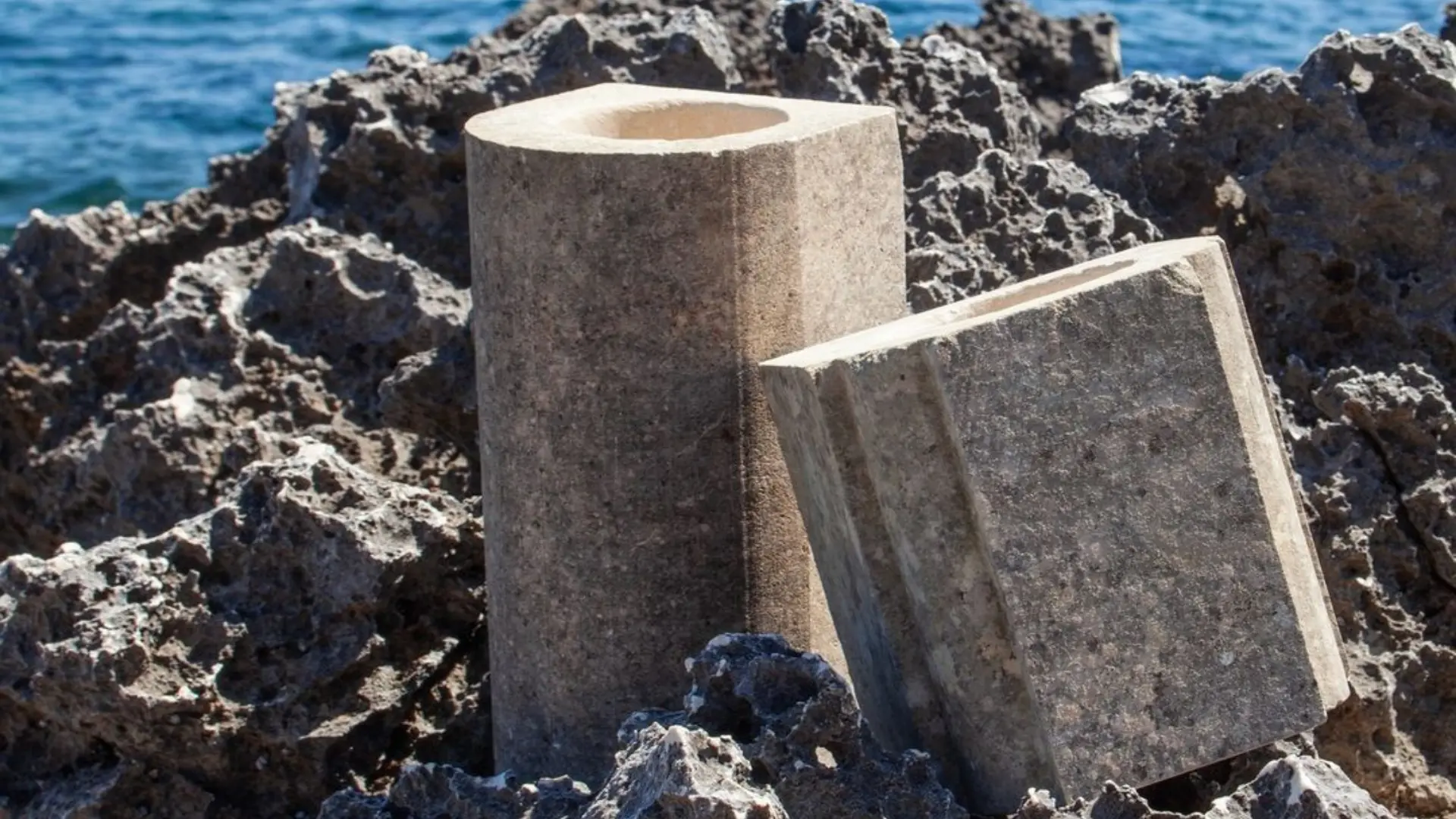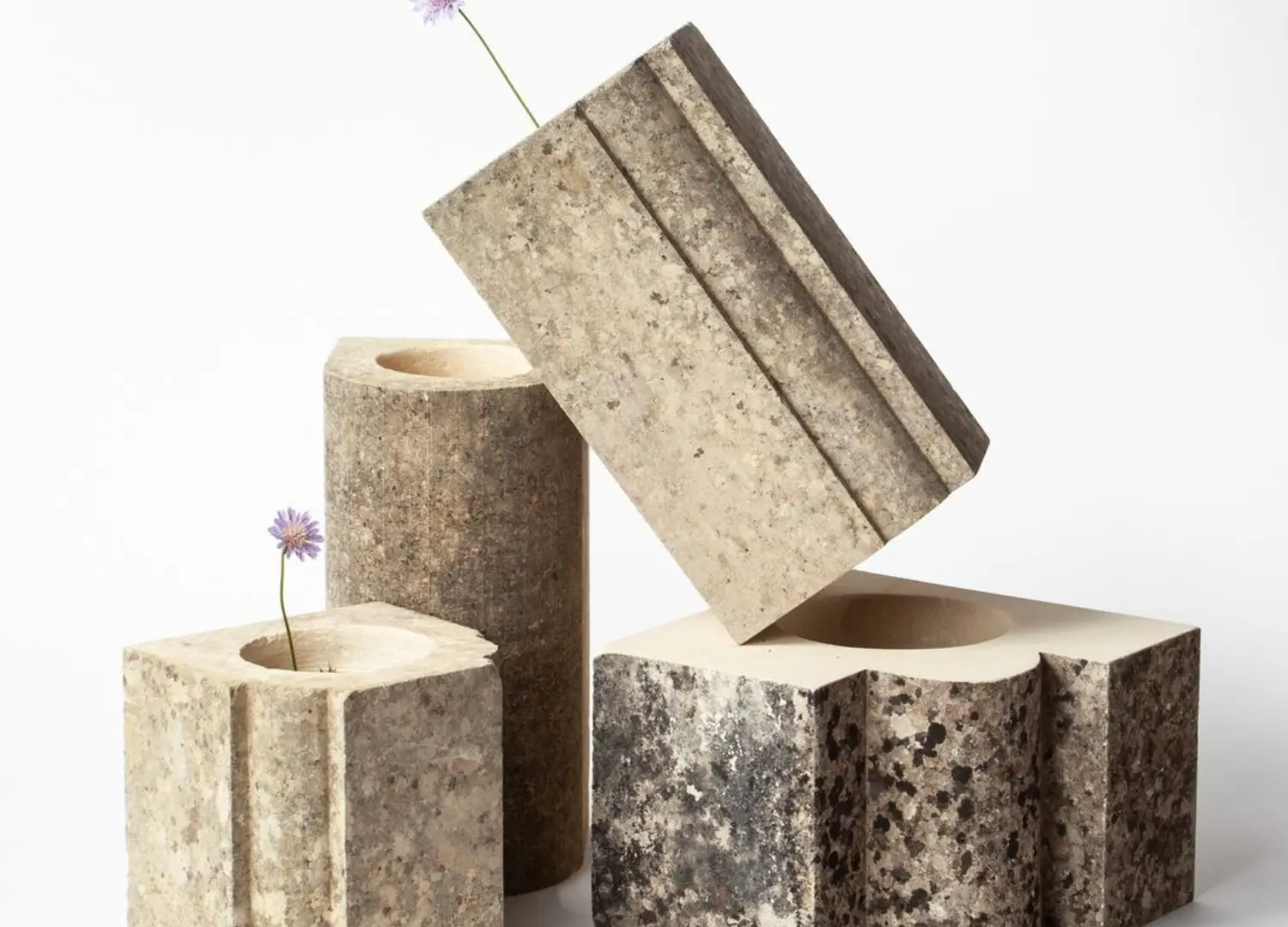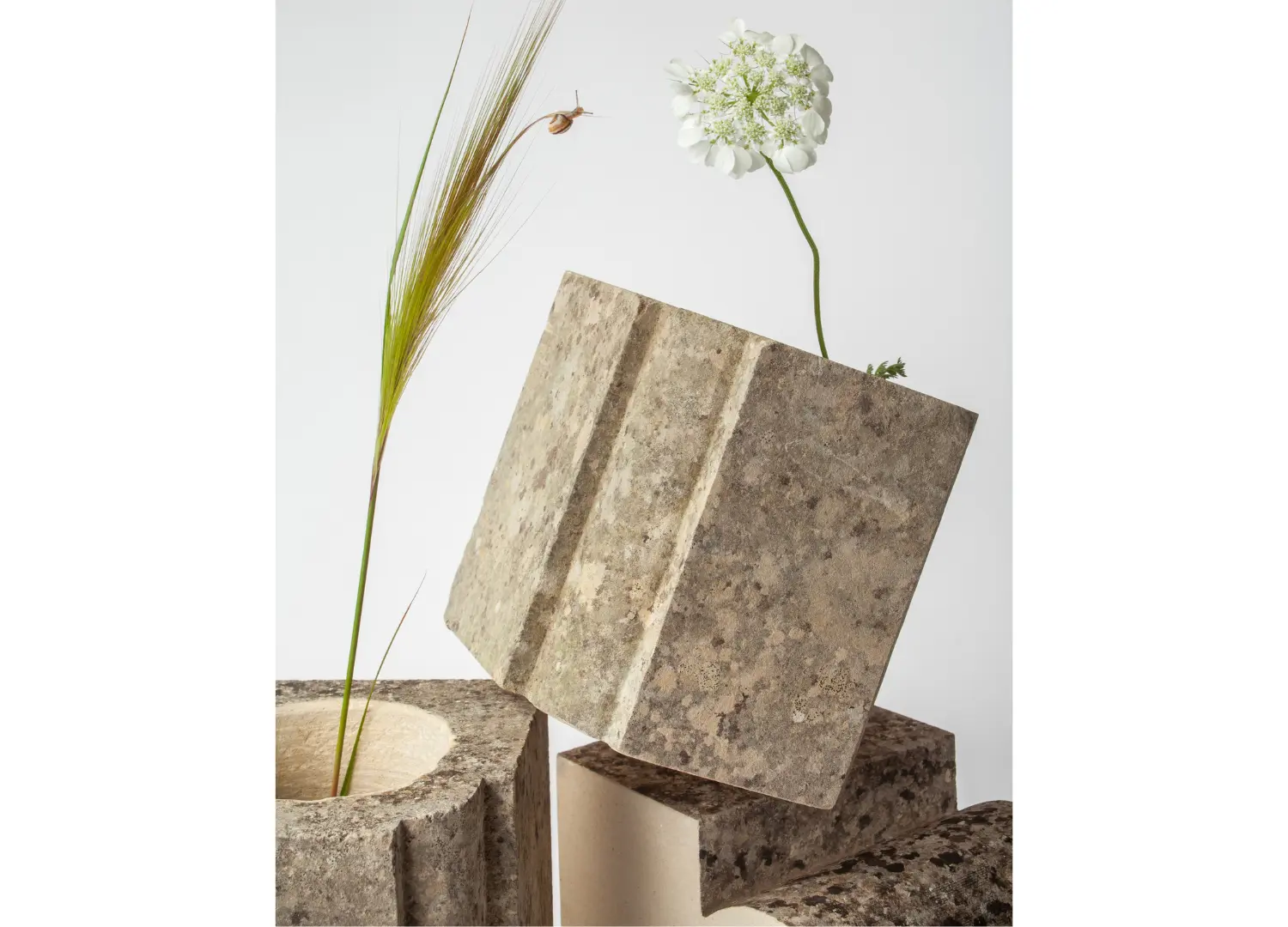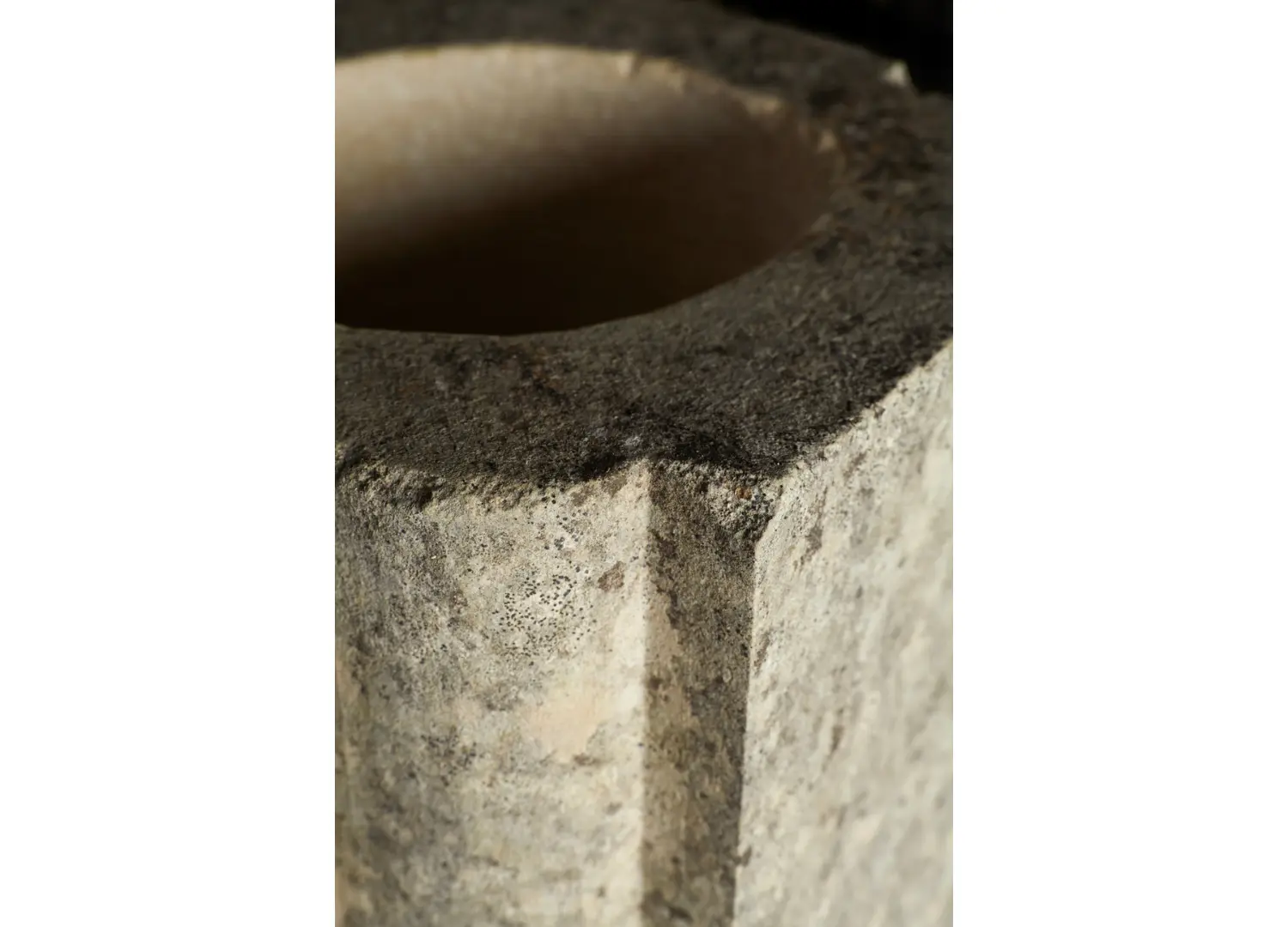Exploring materials, sustainability and the nature-man connect with Licheni
R+S investigates nature’s ability to interact with human artifacts with Licheni, enriching them with colored shades.

Introduced at EDIT Napoli 2023 by R+S – the Licheni project aims to investigate the field of stone objects, whose surfaces are an artifact and at the same time a natural substrate suitable for the proliferation of plant microorganisms which then allow the growth of other superior species.

Born in Matera in 2020, R+S is a collaboration between designer Rosaria Copeta and architect Stefania Galante.
Based on the research of territorial matrices and materials as well as on their possible interactions with contemporary design – they share the same vision of this project.
They intriguingly consider the practice of design as a process of re-signification of material and the concept of sustainability as an approach in which man and nature harmoniously act together.

The product therefore becomes a narrative device capable of seamlessly expressing a deep thought that offers new perspectives for understanding the human being.
Lichens colonize all lithic substrates – including artificial ones – such as bricks and mortar and are the most widespread example of how nature is able to effortlessly interact with human artifacts, enriching them with colored shades.
At first, these one-of-a-kind minimalistic vases are innovatively handcrafted with recycled stone material, which already has partial or total lichen coverings, coming from the unsold stocks of the Ecade di Martano (LE) company, formally reworked with a minimum intervention to reduce energy, processing costs and additional waste.

Additionally, the project, through the preservation of biological covers, which will continue to increase, also wants to stimulate a reflection on the relationship of materials with time, obsolescence and the preservation of natural life – being lichens are further bioindicators of air quality.
Behind the concept – “2,421 exploded nuclear devices, steel, concrete and plastic that constitute the new geological substrate, alteration of the nitrogen, carbon and phosphorus cycle and particles of aluminum, plastic and concrete dispersed in the atmosphere and underground, this is the Anthropocene, the era in which the relationship between man and nature transformed from mutual adaptation to domination of the former over the latter.
A relationship whose analysis has engaged and still engages philosophers, scientists and artists and on which the project is called upon to question itself in order to provide answers in factual terms!” explain R+S.

Licheni intends to enhance this beautiful spontaneous relationship between the life of plants and the work of man and wants to transform the decorative action into a sort of cooperation with the natural element which is able to paint textures on surfaces of daily used objects.







